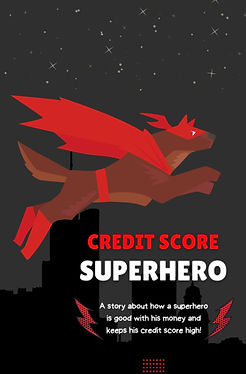
1. "Money Doesn't Grow On Trees"
by Heath McKenzie
Target audience: Ages 4–10
Key lessons: Sources of income, budgeting, saving vs. spending
This engaging story distills the classic parental refrain—“Money doesn’t grow on trees”—into a narrative about thinking carefully before making a purchase. Vivid illustrations help children recognize how income is earned, and how spending choices relate to real-world limitations.
2. "Earn It!"
by Cinders McLeod
Target audience: Ages 4–10
Key Lesson: Emphasizes the value of work and income.
In Earn It!, the lively illustrations and narrative invite young readers into the world of earning money through age-appropriate tasks and chores. The bunny character takes on small jobs, showing kids that hard work leads to rewards. The book demystifies the process of earning by presenting relatable scenarios, making the concept feel attainable and motivating.
3. "Save It!"
by Cinders McLeod
Target audience: Ages 4–10
Key Lesson: Demonstrates how setting aside small amounts leads to achieving goals.
Save It! continues the adventure with vibrant visuals and a friendly tone that emphasize the importance of saving.
Through the bunny's journey to reach a savings goal, kids learn how saving can lead to bigger rewards, like a desired toy or experience.
The story makes the concept of delayed gratification engaging, reinforcing that every little bit saved adds up over time.
4. "Spend It!"
by Cinders McLeod
Target audience: Ages 4–10
Key lesson: Encourages thoughtful spending decisions.
Spend It! Provides a colorful exploration of wise spending choices. The bunny character faces decisions about what to buy, encouraging kids to think critically about their purchases.
With lively illustrations that capture the excitement of shopping, this book breaks down spending into manageable concepts, helping children understand the value of making informed decisions with their money.
5. "Give It!"
by Cinder McLeod
Target audience: Ages 4–10
Key lesson: Highlights generosity and sharing
Give it! is a charming and accessible introduction to generosity and giving. Through playful illustrations and a heartwarming story, young readers learn that sharing what we have can bring joy to ourselves and others. A perfect addition to any financial literacy collection!
6. "The Four Money Bears"
by Mac Gardner
Target audience: Ages 8–12
Key lessons: Spending, saving, investing, giving
This book introduces four bear characters—Spender, Saver, Investor, and Giver—each representing a distinct financial behavior. Children learn how money serves different purposes and the importance of balance.
7. "The American Girl Money Book"
by Nancy Holyoke (Author) and Brigette Barrager (Illustrator)
Target audience: Ages 8–12
Key lessons: Budgeting, saving, banking, smart spending
Like most American Girl books, this confidence-building guide is empowering. It covers the basics of money in a format that’s especially accessible for tweens, explaining everyday concepts—like opening a bank account or making a budget. Practical, engaging, and perfectly aligned with the brand’s tradition of teaching life skills through storytelling.
by Melanie Antaya
Target audience: Ages 8–12
Key lessons: Credit scores, responsible borrowing, financial consequences
This graphic-style story transforms a tricky adult topic—credit scores—into a superhero adventure. Kids learn how borrowing, paying bills on time, and financial decisions affect your “credit superpowers.” It’s a simple, creative way to introduce credit literacy early.
9. "What Is Money?"
Little Economists
by Kelly Lee
Target audience: Ages 6–12
Key lessons: Money basics, saving, budgeting, entrepreneurship
From understanding what money is and why it matters, to learning about saving goals, spending choices, and even launching a simple business—this book offers a comprehensive yet digestible foundation. It’s ideal for curious young minds ready to explore how money really works in their world.
10. "The ABCs of Finance"
by Britt Rozenblat
Target audience: Ages 1–10
Key lessons: Finance vocabulary
From A for Assets to Z for Zero, each letter introduces a new money concept—such as Earning allowance or negotiating snacks—with playful examples like toy lending and playhouse real estate. The real-world analogies make abstract financial ideas surprisingly tangible.
11. "What is Inflation"
by Kelly Lee
Target audience: Ages 3-8
Key lessons:
-
Prices can change over time
-
Real-world events can affect costs
-
Inflation means money does not always buy the same amount
Using a simple, relatable story, (Charlie learns about rising prices after a storm affects his bakery), the book introduces the idea of inflation in a way that feels concrete and easy to understand.
This book is a great early introduction to an important money concept and works well as a conversation starter for parents and educators explaining why prices sometimes go up.
12. "Prices! Prices! Prices!: Why They Go Up and Down"
by David A. Adler, illustrated by Edward Miller
Target audience: Ages 6-9
Key lessons:
-
Why prices can change over time
-
How supply and demand affects cost
-
Simple economic ideas
This book is a great early introduction to the mechanics behind prices and a helpful step toward understanding how markets work. This book is a great early introduction to the mechanics behind prices and a helpful step toward understanding how markets work.












